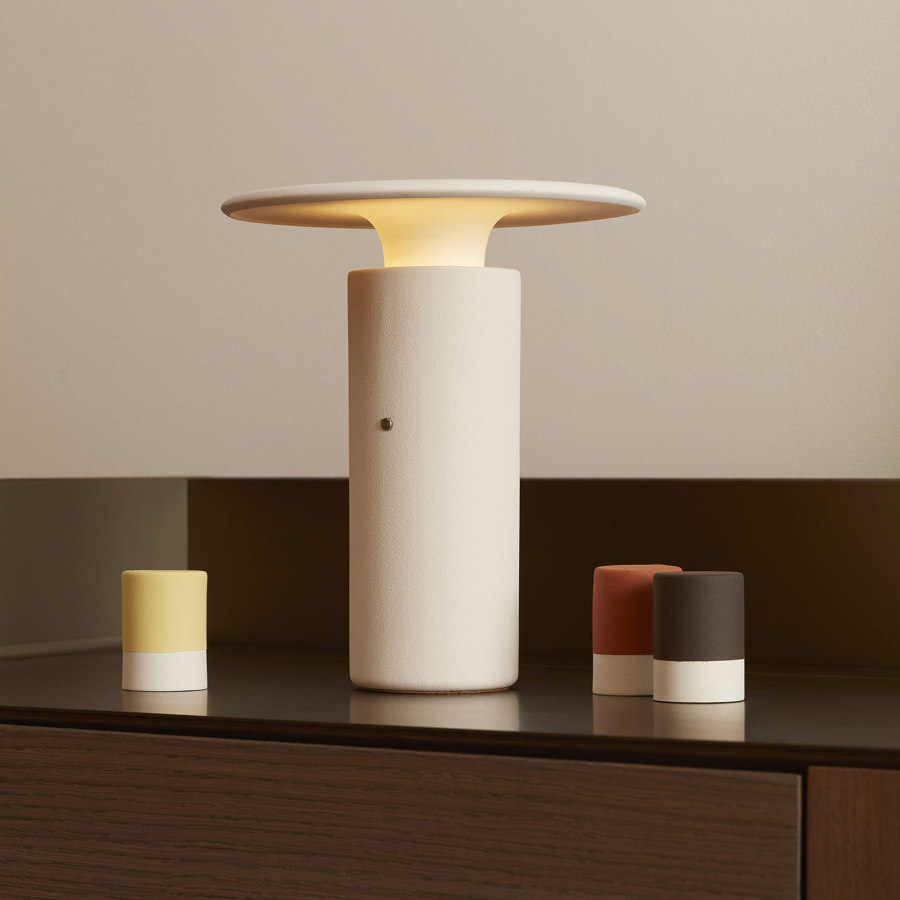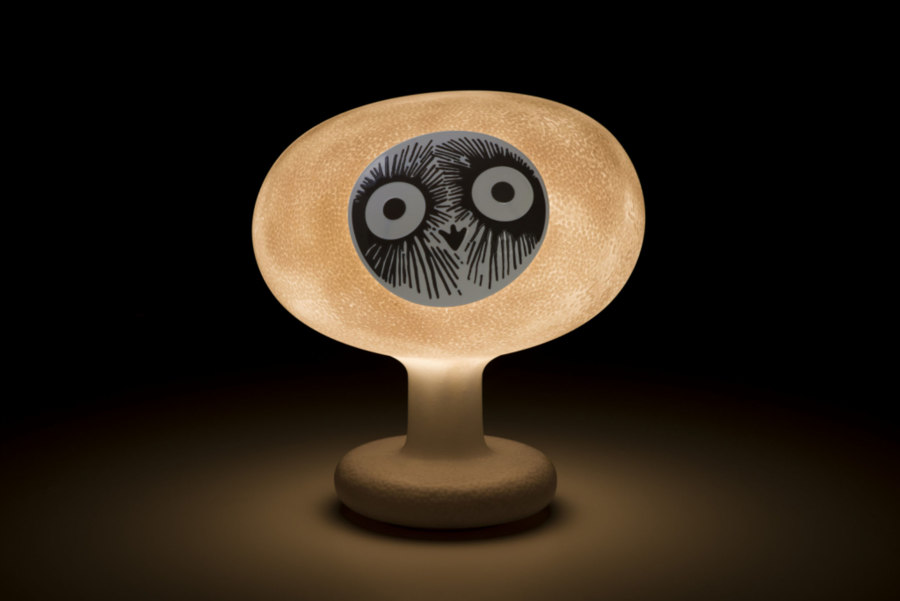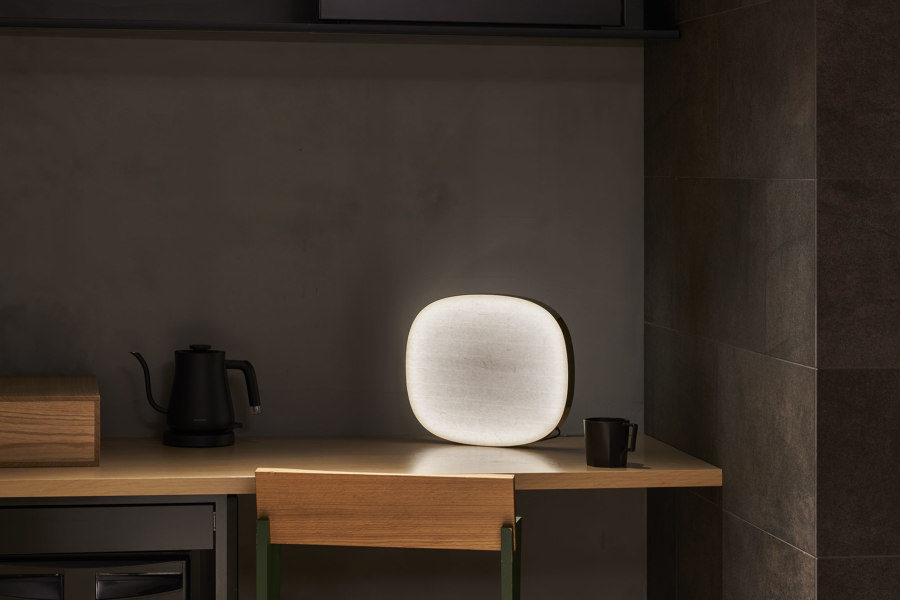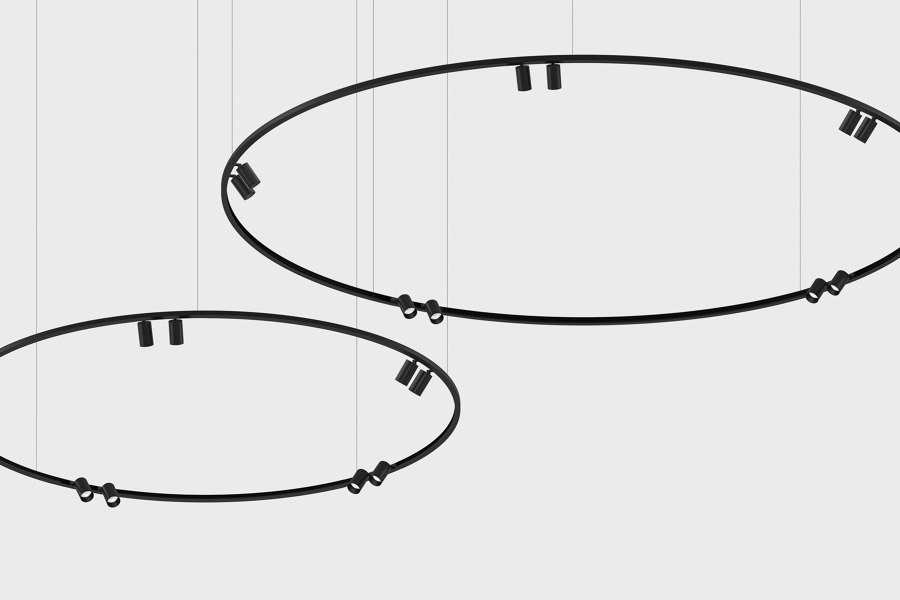If you please: iF Design Award 2021
Brand story by Markus Hieke
03.06.21
If the number of entries for the iF Design Award 2021 is anything to go by, the design landscape, despite the pandemic, would appear to be in fine health. We shine a light on some of this year’s winners...
One of the winners of the iF Design Award 2021: The portable Cocktail table lamp by Francesc Vilaró for Grok tilts its head when lightly tapped
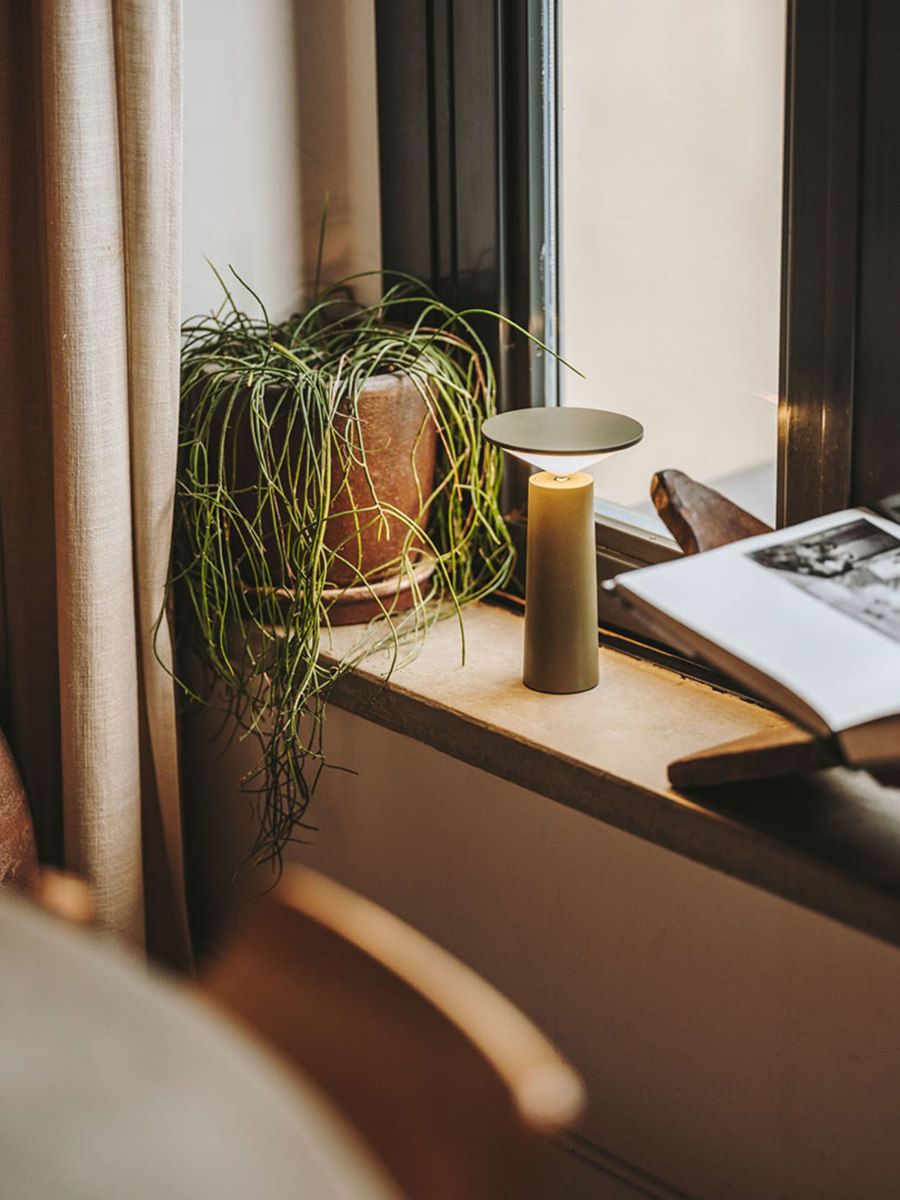
One of the winners of the iF Design Award 2021: The portable Cocktail table lamp by Francesc Vilaró for Grok tilts its head when lightly tapped
×A little over a year ago, we may not have really thought it possible: that public life would be slowed down for months, that cultural activities would come to a standstill, and one's own home would come to serve as a place not only to live, but to study and work all at the same time. The design world, however, reacted creatively to this new set of circumstances and found new ways of improving our lives during this period of the pandemic.
And this is also clearly reflected in the number of submissions to the iF Design Award 2021, which rose from just under 7,300 last year to over 9,500, proof of how valuable such an award is – especially against the background of so many cancelled trade fairs. At the end of March, the 98-member jury of experts met in purely digital form to decide on the submissions in the fields of product design, communication design, packaging design, architecture, interior design, user interface (UI), user experience (UX), professional concept and service design. Awards were presented to 1,744 participants, with 75 receiving the special iF gold award 2021.
As part of the product design category – the largest one in the competition – here we focus on an area of design that, when applied in the right way, can play an enormous role in providing a sense of wellbeing and comfort in our lives: light.
Providing a cosy atmosphere: with Nais by Luis Eslava Studio for Pottery Project (top), the light is gently reflected on a ceramic surface. Tanit by Gonzalo Milà for Bover (above) proves a good companion for, among other things, evening walks on the beach
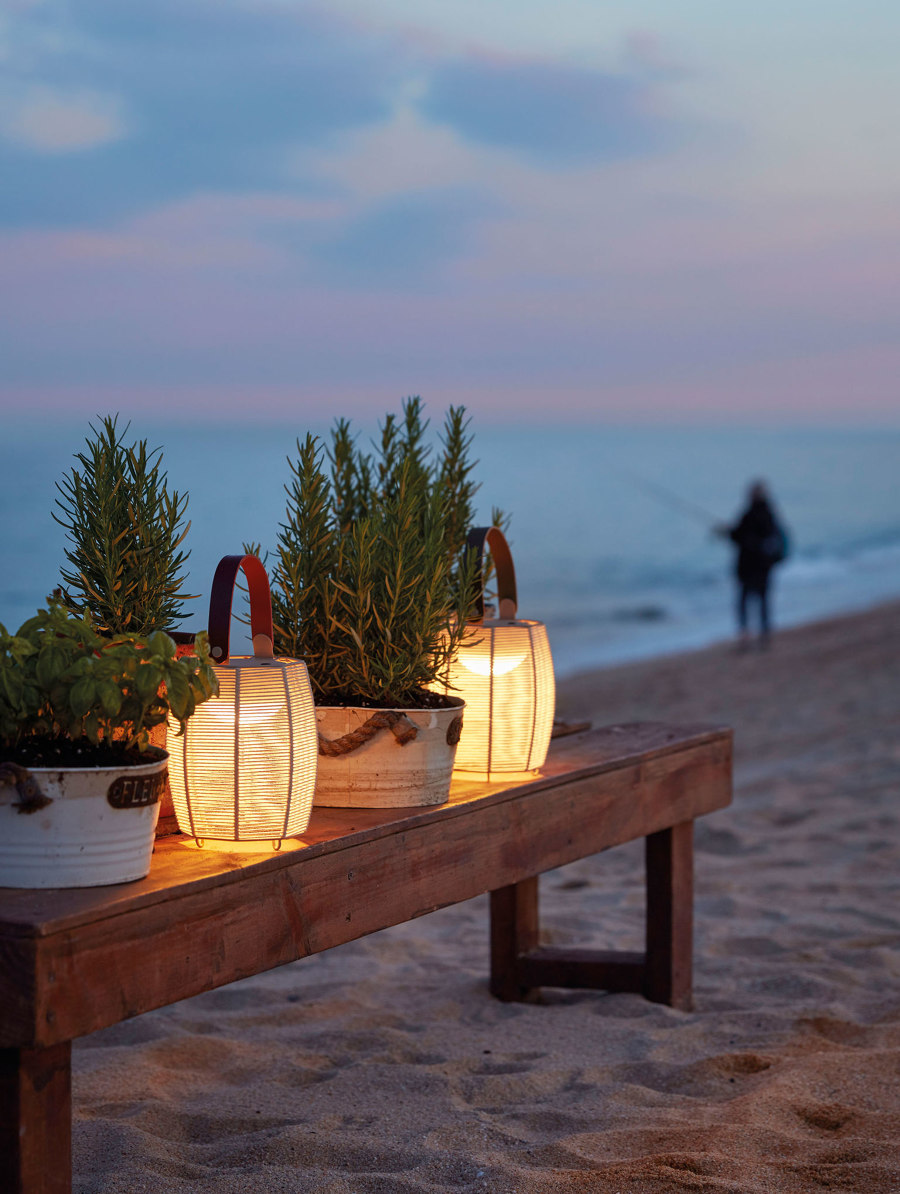
Providing a cosy atmosphere: with Nais by Luis Eslava Studio for Pottery Project (top), the light is gently reflected on a ceramic surface. Tanit by Gonzalo Milà for Bover (above) proves a good companion for, among other things, evening walks on the beach
×Among the winners in the lighting category, there were twelve who, all in their own way, succeeded in setting particular, unique accents, whether indoors or out. Take the portable Cocktail table lamp by product designer Francesc Vilaró of Barcelona-based Diba Studio, for example. This battery-operated light for luminaire brand Grok can be dimmed to four levels, and the cone-shaped lampshade can be tilted slightly on a ball joint.
The number of submissions to the iF Design Award 2021, which rose from just under 7,300 last year to over 9,500, is proof of how valuable such an award is – especially against the background of so many cancelled trade fairs
The Nais lamp by Luis Eslava Studio for Pottery Project from Spain is similarly puristic. The lamp body is made of ceramic. Also portable, its light shines both below the lampshade and from its funnel-shaped top. Outdoor lantern Tanit by Gonzalo Milà for Bover also comes from Spain. The shade consists of carefully wound cotton cords and ensures that the light gently illuminates the darkness of the night, while Its handle is suggestive of nighttime walks on the beach.
Magis has translated the Linnut glass figures by Finnish designer Oiva Toikka into polycarbonate illuminated sculptures (top). The sculptural Abissal by Vista Alegre (above) is made of coloured crystal glass
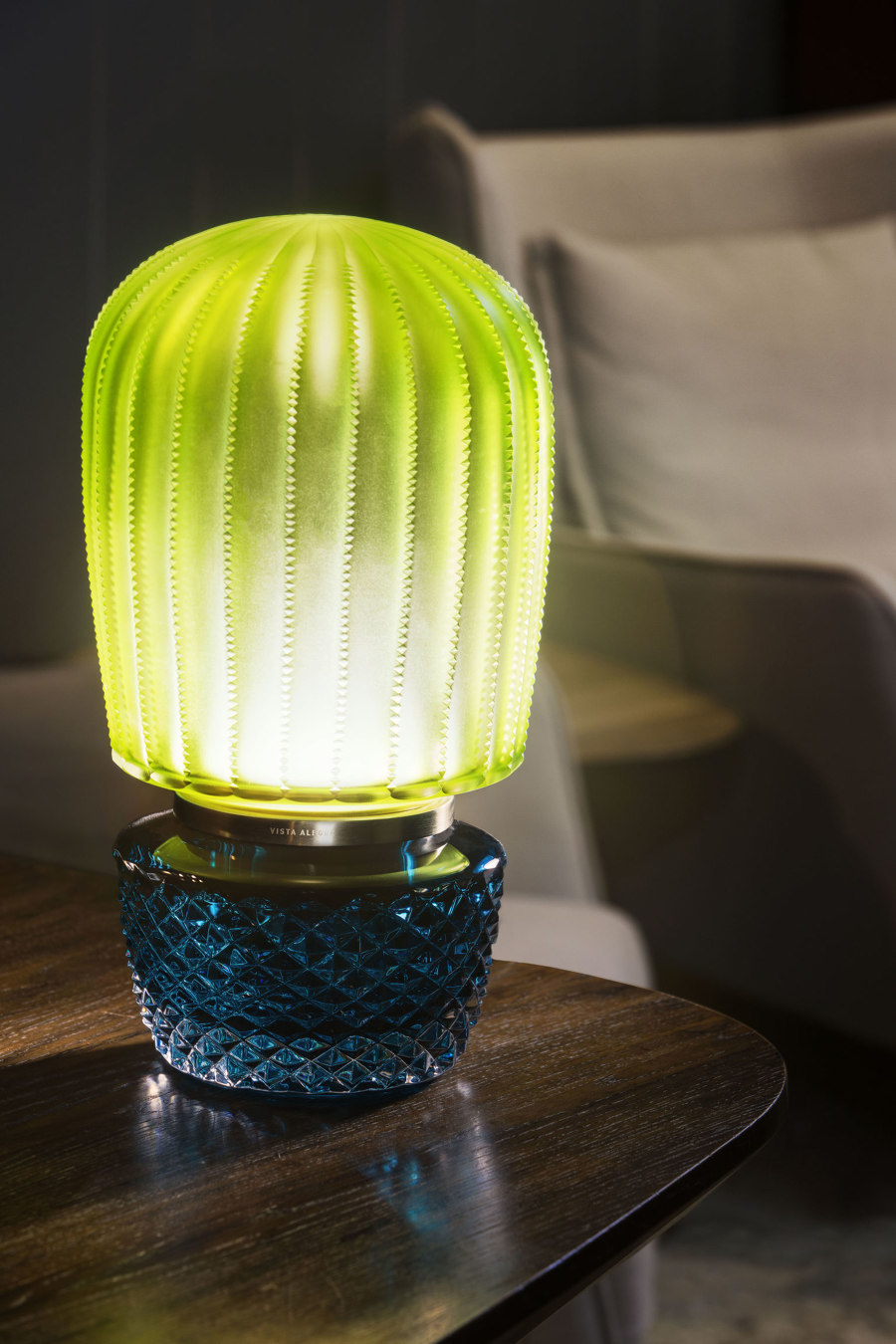
Magis has translated the Linnut glass figures by Finnish designer Oiva Toikka into polycarbonate illuminated sculptures (top). The sculptural Abissal by Vista Alegre (above) is made of coloured crystal glass
×Italian company Magis has translated the glass Linnut figures of Finnish glass designer Oiva Toikka, who sadly died in 2019, into small light sculptures. Magis and Toikka, along with Finnish glass manufacturer Iittala, worked closely together to bring a new rotationally moulded polycarbonate interpretation of the bird figures, hand-blown since the 1970s, to light. In contrast, the equally animal-inspired Abissal luminaire by Vista Alegre from Portugal is more abstract. With its name meaning ‘originating from the deep sea’, the luminaires, which are made of coloured crystal glass, are reminiscent of bioluminescent sea creatures and present a contemporary approach to traditional glass production.
It is insightful that for the 67th edition of the iF Design Award, so many entries share a common thread, namely the importance of creating sustainable, reusable and recyclable solutions
And-on is a design by Saltco for Y.S.M, both from Japan. The oval table and floor lamp is formed by a brass-coloured metal band. With two skins made of washi paper serving as a diffuser, And-on is a modern interpretation of antique techniques and emits light harmoniously. Similarly, Royoko from China transfers a centuries-old material into a contemporary design. The lampshade and base of the Fú table lamp are made of rice grain porcelain, for which the city of Jingdezhen is famous.
Traditional Japanese washi paper serves as the diffuser of the And-on table lamp by Saltco for Y.S.M. (top), while Royoko has created the Fú lamp (above) using Chinese rice grain porcelain
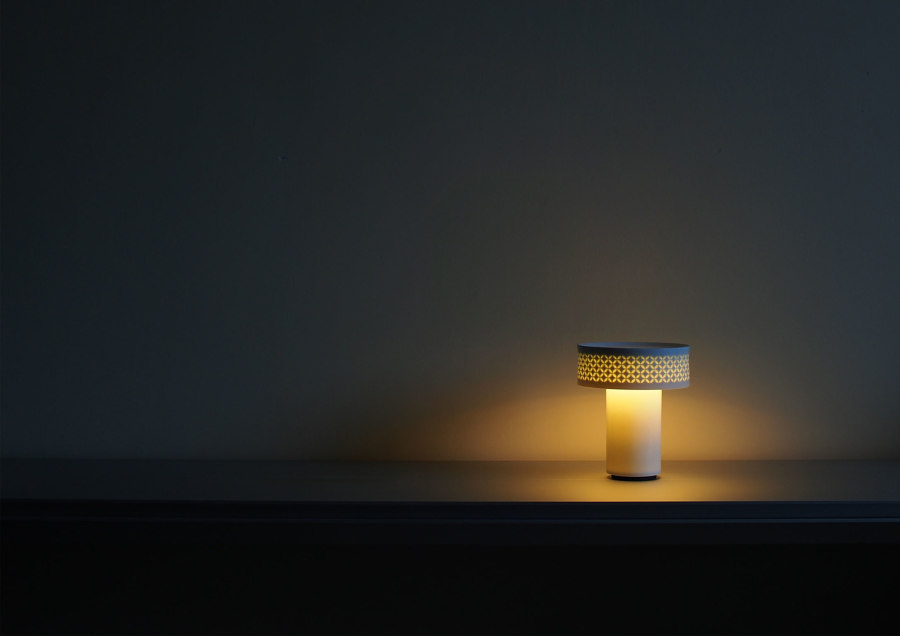
Traditional Japanese washi paper serves as the diffuser of the And-on table lamp by Saltco for Y.S.M. (top), while Royoko has created the Fú lamp (above) using Chinese rice grain porcelain
×The Philips Hue Iris table lamp by Eindhoven’s Signify is no less decorative. After a redesign, the smart lamp now appears even more discreet and is supplied with power via a textile cable. Depending on the situation, the light colour can be adjusted as desired.
The iF Design Award jury also selected outstanding models in the fixed luminary category. Nime was created in collaboration with Croatian lighting designer Dean Skira for Belgian company Delta Light. The powerful spotlight is concealed almost invisibly in a ceiling opening of just ten mm. In this way, the medium of light becomes an immaterial design object but which likewise knows how to set the stage in a selective way.
Philips Hue Iris lamp (top) has been redesigned so that it now looks even more discreet – the light colour can be adjusted as desired. Mini spotlight Nime (above) makes small light big, and was created for Delta Light in collaboration with Dean Skira
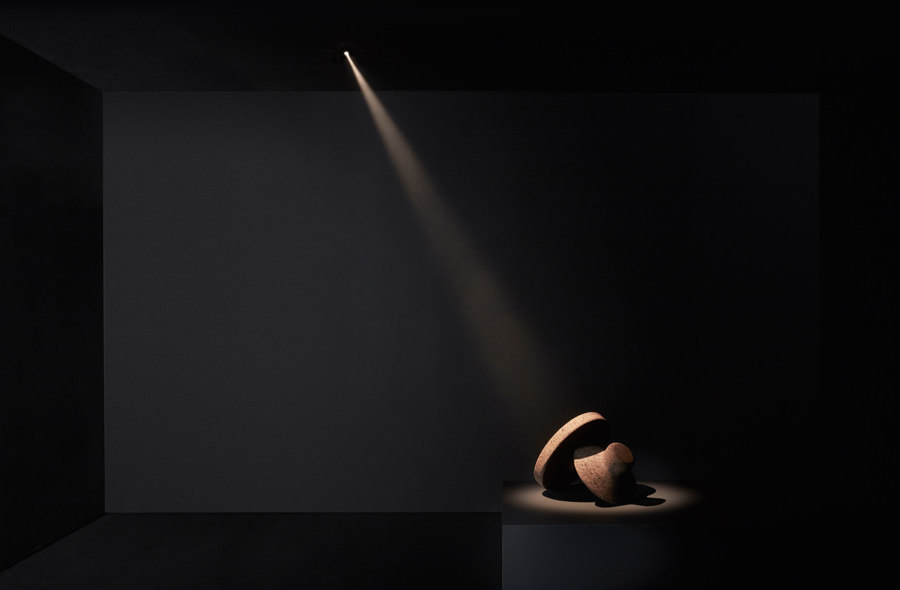
Philips Hue Iris lamp (top) has been redesigned so that it now looks even more discreet – the light colour can be adjusted as desired. Mini spotlight Nime (above) makes small light big, and was created for Delta Light in collaboration with Dean Skira
×The ring-shaped track system Infinity Lighting System by Centrsvet from Moscow offers general- and spot lighting in one. The rings, which can be equipped as required, are available in four sizes and can be positioned individually or as a group. With Edge by Denmark’s Light-Point, on the other hand, the light source remains almost completely invisible. The pendant luminaire is available as a ring or straight version and the light can be controlled via smartphone app or touchless sensor. The lamp body is conically shaped so that the largest possible area is illuminated downwards, while also providing atmospheric indirect light towards the ceiling.
The Infinity Lighting System light rings by Centrsvet (top) can be fitted individually or as a group with spotlights or as general lighting. Edge by Light-Point (above) provides atmospheric direct and indirect light
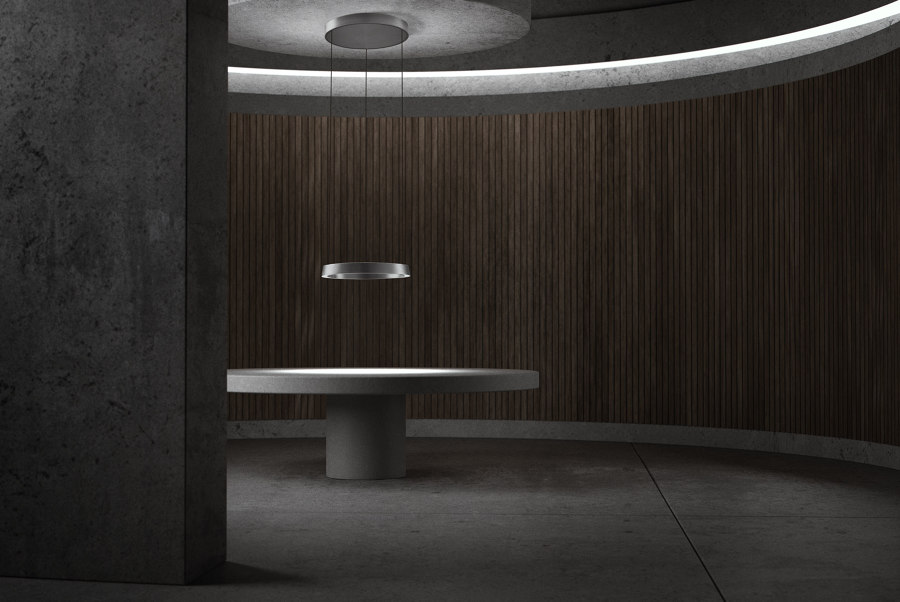
The Infinity Lighting System light rings by Centrsvet (top) can be fitted individually or as a group with spotlights or as general lighting. Edge by Light-Point (above) provides atmospheric direct and indirect light
×Orbit also comes from Light-Point. This wall spotlight for indoor and outdoor use is equipped with optical glass lenses that distribute the light effectively, softly and glare-free upwards and downwards. Orbit was designed in such a way that at the end of its life cycle it can be completely disassembled into its glass and aluminium components and recycled, and, in addition to the wall versions, there are also three floor-standing options.
In the Orbit wall spotlights by Light-Point, glass lenses provide soft, glare-free light on walls and also in open spaces as a free-standing version
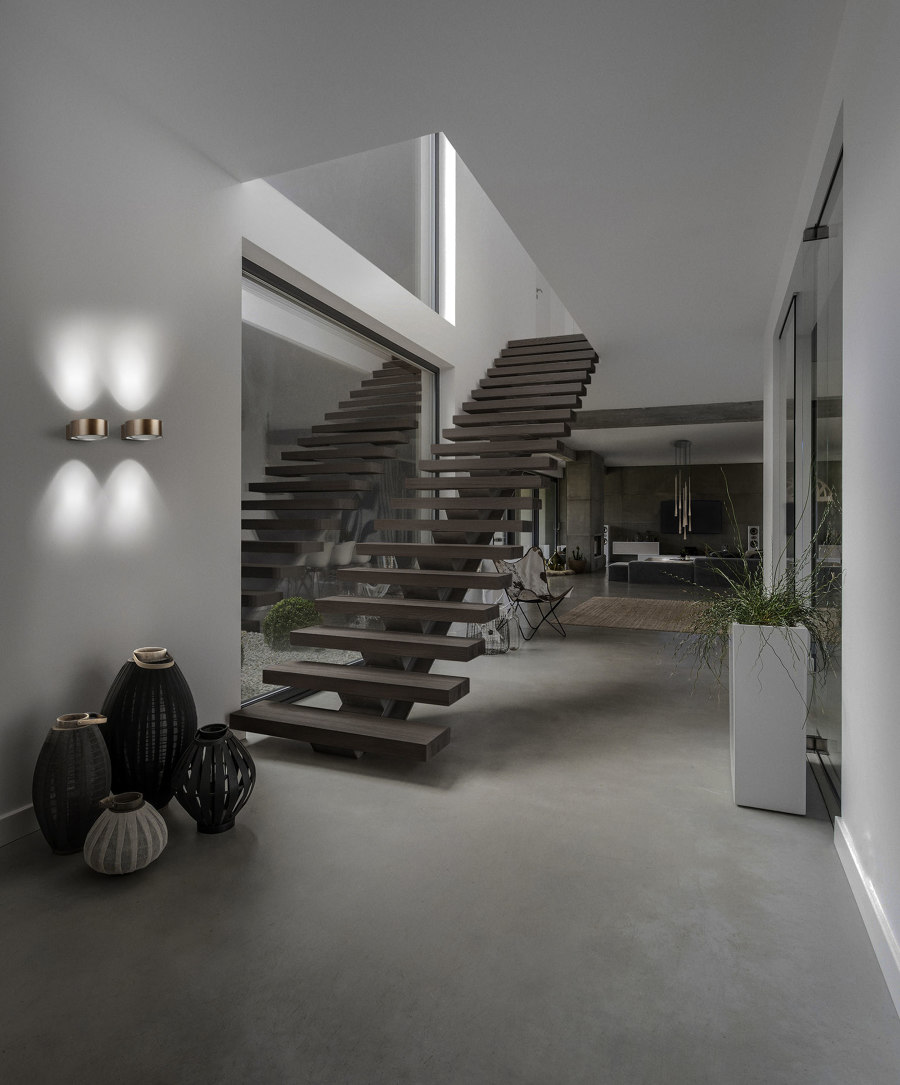
In the Orbit wall spotlights by Light-Point, glass lenses provide soft, glare-free light on walls and also in open spaces as a free-standing version
×And it is insightful that for the 67th edition of the iF Design Award, so many entries share a common thread, namely the importance of creating sustainable, reusable and recyclable solutions, says Sam Hecht, one of the six chairpersons on the jury. For four decades, Dieter Rams, for one, has been committed to this discussion on mass consumption. ‘At this year's award, I had the impression that designers have really finally woken up to these demands,’ says Hecht.
Enlightening moments, certainly – arousing our curiosity as to who the remaining 1,732 winners of the iF Design Award 2021 are.
© Architonic

